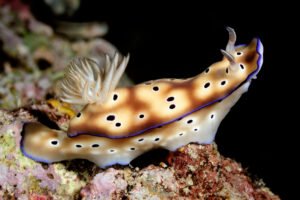 Nudibran Fascinating World of Nudibranchschs, often referred to as ‘sea slugs,’ are a unique group of marine gastropod mollusks that inhabit oceans around the globe. Belonging to the clade Opisthobranchia, these fascinating creatures are characterized by their soft bodies and lack of a protective shell, which differentiates them from other mollusks like snails. Their remarkable adaptability to various marine environments is evident in their wide distribution, from coral reefs to deep-sea habitats.
Nudibran Fascinating World of Nudibranchschs, often referred to as ‘sea slugs,’ are a unique group of marine gastropod mollusks that inhabit oceans around the globe. Belonging to the clade Opisthobranchia, these fascinating creatures are characterized by their soft bodies and lack of a protective shell, which differentiates them from other mollusks like snails. Their remarkable adaptability to various marine environments is evident in their wide distribution, from coral reefs to deep-sea habitats.
One of the most striking features of nudibranchs is their vibrant coloration. Their diverse hues serve multiple purposes, including camouflage, warning predators of their toxicity, or mimicking other toxic species in the marine ecosystem. The brilliant colors are not just aesthetically pleasing; they signify the nudibranch’s chemical defenses,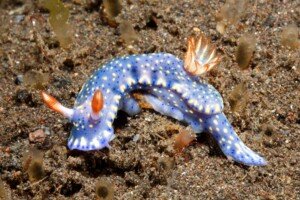 often derived from the sponges or other organisms they consume. This remarkable ability to incorporate the chemical compounds of their diet makes them integral players in the underwater food chain.
often derived from the sponges or other organisms they consume. This remarkable ability to incorporate the chemical compounds of their diet makes them integral players in the underwater food chain.
The morphology of nudibranchs is equally diverse, with various forms ranging from the elongated and ribbon-like to the flattened and di
sc-like. Each species exhibits unique adaptations that allow them to thrive in their respective environments. These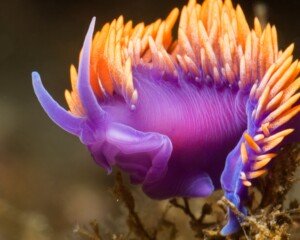 adaptations include specialized structures such as cerata, which not only enhance respiration and nutrient absorption but also provide additional surface area for their vibrant colors to be displayed. The intricate shapes and designs of nudibranchs further enhance their roles in marine ecosystems, showcasing the interconnectedness of life beneath the waves.
adaptations include specialized structures such as cerata, which not only enhance respiration and nutrient absorption but also provide additional surface area for their vibrant colors to be displayed. The intricate shapes and designs of nudibranchs further enhance their roles in marine ecosystems, showcasing the interconnectedness of life beneath the waves.
Moreover, nudibranchs contribute to the health of marine environments by serving as both predators and prey. They feed primarily on sponges, anemones, and other invertebrates, helping to regulate populations within these communities. As prey, they offer vital sustenance to a range of marine predators, including fish, crustaceans, and sea turtles, thus maintaining ecological balance. Understanding nudibranchs and their roles emphasizes their significance in marine ecosystems and highlights the need for their conservation.
Habitat and Distribution
Nudibranchs, often referred to as sea slugs, are renowned for their striking colors and diverse shapes, but their habitat and geographical distribution are equally fascinating. These gastropod mollusks can be found in various marine environments, ranging from shallow coastal waters to deeper ocean zones. They typically inhabit areas rich in biodiversity, where ample food sources such as sponges, algae, and other small marine organisms are readily available.
equally fascinating. These gastropod mollusks can be found in various marine environments, ranging from shallow coastal waters to deeper ocean zones. They typically inhabit areas rich in biodiversity, where ample food sources such as sponges, algae, and other small marine organisms are readily available.
Commonly, nudibranchs thrive in temperate and tropical regions across the globe. The most diverse populations are located in the Indo-Pacific region, particularly around coral reefs, where the rich ecosystem supports a wide range of species. For instance, areas like the Great Barrier Reef in Australia and the Red Sea are recognized for their vibrant nudibranch communities. Additionally, temperate zones like the Mediterranean Sea also host significant populations, showcasing variations in color and size.
nudibranch communities. Additionally, temperate zones like the Mediterranean Sea also host significant populations, showcasing variations in color and size.
The distribution of nudibranchs is influenced by several environmental factors including temperature, salinity, and the presence of suitable prey. Warmer waters are typically more conducive to their survival and reproductive processes. As such, nudibranchs can often be found in areas where the sea temperature is relatively stable and above average. Salinity levels can also impact their distribution; they prefer waters with consistent salinity, as extreme fluctuations can negatively affect their health. Furthermore, regions with abundant food sources are essential for their sustenance and growth, driving their presence in biodiverse ecosystems.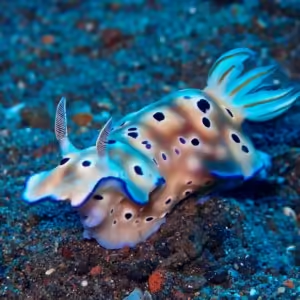
In summary, the habitat and distribution of nudibranchs reflect a complex interplay of environmental conditions and biological needs, illustrating their adaptability and the ecological significance of these remarkable sea creatures.
Lifespan and Development
Nudibranchs, often referred to as sea slugs, exhibit a diverse range of lifespans that are influenced by various environmental factors and species-specific characteristics. Generally, nudibranchs live from several months to a few years in the wild, although some species may have shorter lifecycles. Their survivability is often contingent on their habitat, food availability, and predation rates.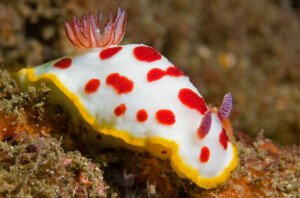
A notable feature of nudibranchs is their hermaphroditic reproductive strategy. This means that individual nudibranchs possess both male and female reproductive organs, enabling them to mate with any mature partner they encounter. This adaptability enhances their chances of reproducing in environments where individuals may be sparse. The mating process typically involves a complex courtship ritual, after which they exchange sperm and subsequently fertilize each other’s eggs.
The lifecycle of nudibranchs is a fascinating journey that begins with the laying of eggs, often in beautiful clusters that can resemble ribbons or spirals. After a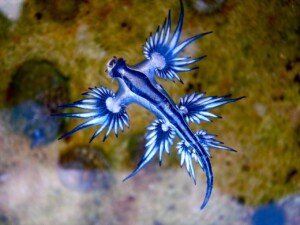 certain period, usually within a few days to weeks, the eggs hatch, releasing larval forms known as veligers. These larvae float in the water column and undergo several developmental stages before settling onto substrates where they metamorphose into juvenile nudibranchs.
certain period, usually within a few days to weeks, the eggs hatch, releasing larval forms known as veligers. These larvae float in the water column and undergo several developmental stages before settling onto substrates where they metamorphose into juvenile nudibranchs.
Upon settling, the juvenile nudibranchs rapidly grow and evolve their unique colors and patterns, which serve both as camouflage and warning signals to potential predators. However, nudibranchs face numerous environmental threats that can significantly impact their lifespan and population dynamics. Climate change, ocean acidification, and habitat destruction pose serious risks, leading to decreased food sources and increased mortality rates. The understanding of these factors is crucial to the conservation of nudibranchs and the ecosystems they inhabit.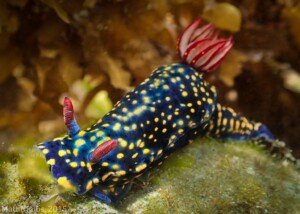
Toxicity and Defense Mechanisms
Nudibranchs, often recognized for their vibrant hues and intricate patterns, exhibit a range of toxicity levels that play a vital role in their survival within marine ecosystems. Depending on the species, these colorful sea slugs can possess various chemical defenses developed either through their diet or inherent biological processes. Specifically, some nudibranchs derive toxins from the sponges, anemones, or other organisms they consume, effectively incorporating these toxic substances into their own tissues, which enhances their defense against predators.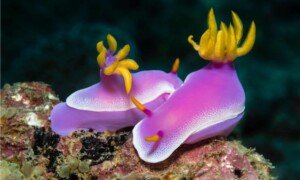
The phenomenon of aposematism—where bright colors signal danger or toxicity—greatly aids in nudibranchs’ survival strategy. Their striking appearance not only allows them to stand out vividly in their environments but also communicates their potential toxicity to would-be predators. This association between vivid coloration and harmful effects helps to deter fish and other marine creatures from consuming these intriguing animals. As a result, the chances of survival for the nudibranch increase significantly.
Notable examples of poisonous nudibranchs include the Spanish dancer (Hexabranchus sanguineus) and the blue dragon (Glaucus atlanticus). The Spanish dancer, with its flowing, bright red body, is not only visually stunning but also exudes chemicals that can cause harm to smaller fish. Conversely, the blue dragon utilizes a unique approach by ingesting and storing the nematocysts from its prey, such as jellyfish, using these stinging cells as a defense mechanism against larger predators. These interactions between nudibranchs and their surrounding marine life underline a fascinating evolutionary arms race, balancing risks and benefits for both the nudibranchs and their potential threats.
Spanish dancer, with its flowing, bright red body, is not only visually stunning but also exudes chemicals that can cause harm to smaller fish. Conversely, the blue dragon utilizes a unique approach by ingesting and storing the nematocysts from its prey, such as jellyfish, using these stinging cells as a defense mechanism against larger predators. These interactions between nudibranchs and their surrounding marine life underline a fascinating evolutionary arms race, balancing risks and benefits for both the nudibranchs and their potential threats.
